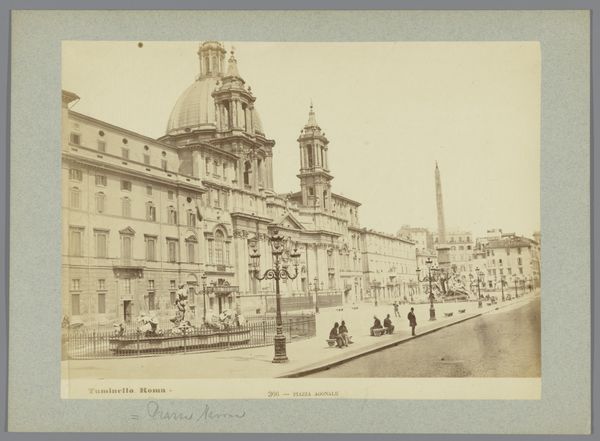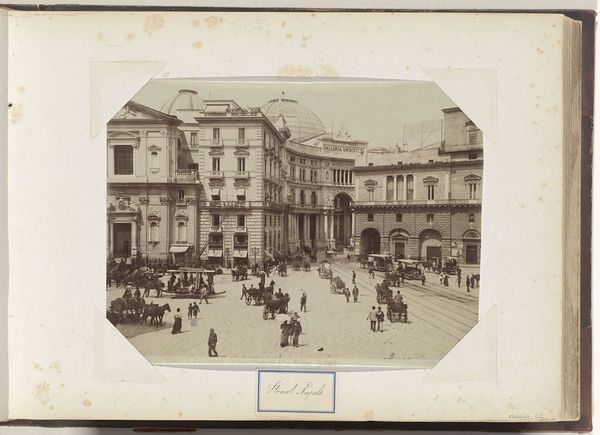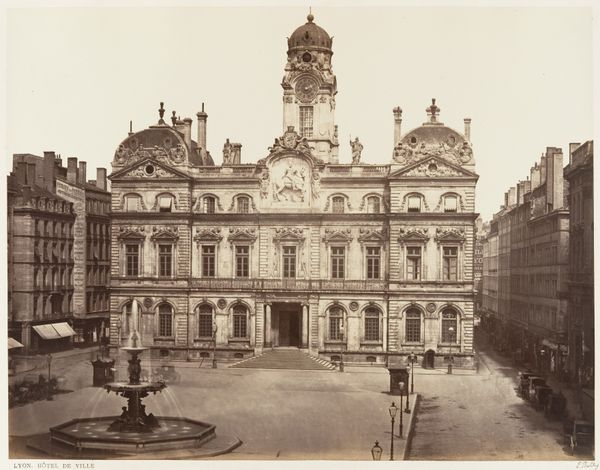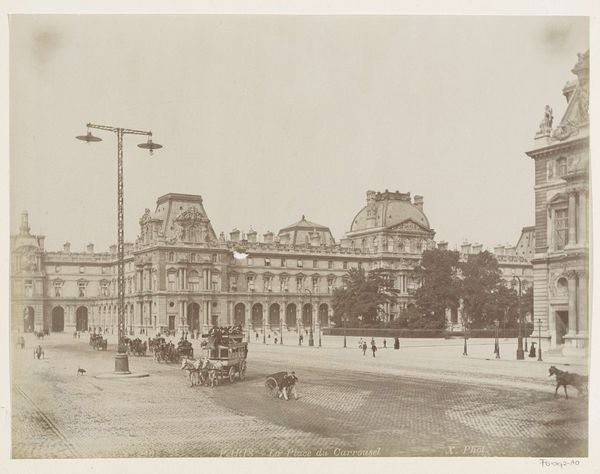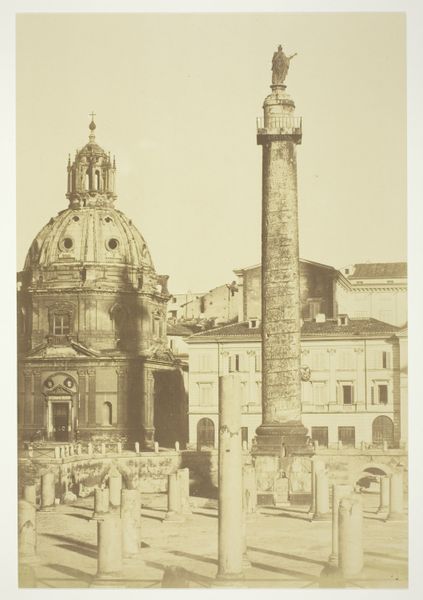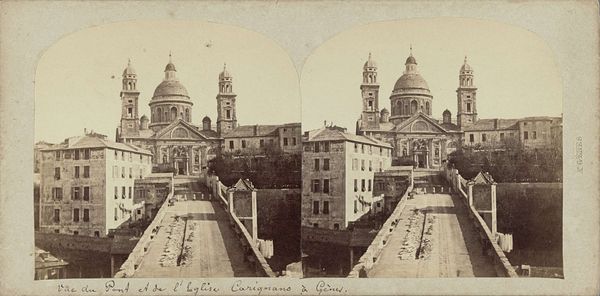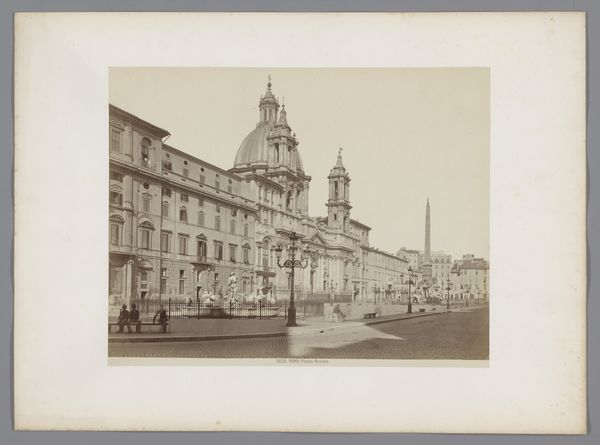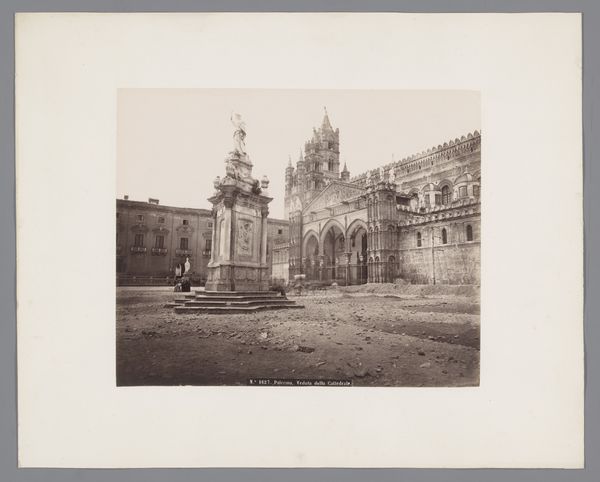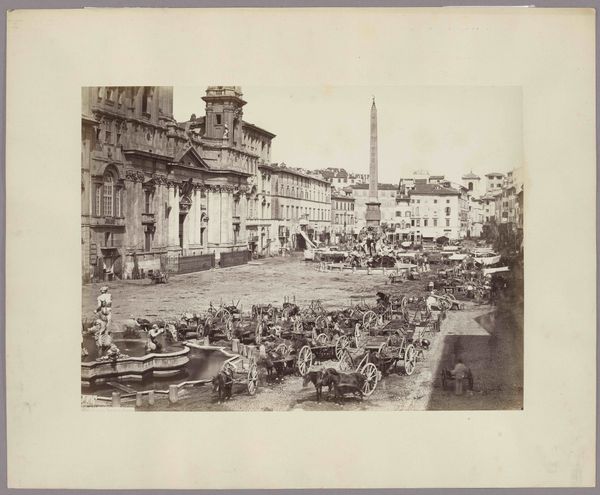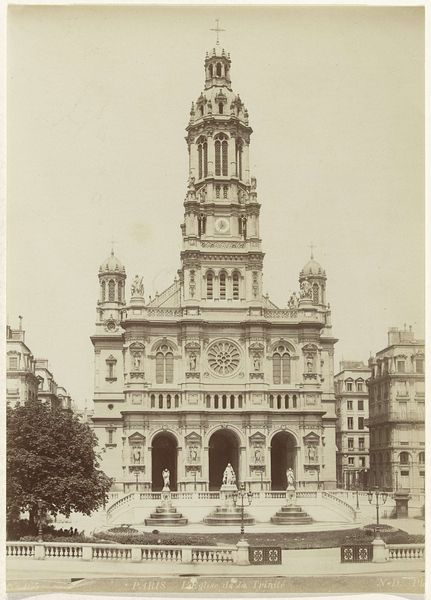
Gezicht op de Piazza Navona in Rome met de San Agnese in Agone en de Fontana del Moro op de voorgrond, Italië 1850
0:00
0:00
daguerreotype, photography
#
landscape
#
daguerreotype
#
photography
#
romanticism
#
cityscape
Dimensions: height 213 mm, width 270 mm, height 316 mm, width 477 mm
Copyright: Rijks Museum: Open Domain
Curator: This daguerreotype from around 1850 by Giacomo Caneva offers us a view of the Piazza Navona in Rome. The Chiesa di Sant'Agnese in Agone and the Fontana del Moro dominate the foreground. Editor: Immediately striking is how still it all feels. Despite capturing a public space, the people seem frozen, almost ghostly. There's a pervasive sense of absence despite the architectural grandeur and signs of bustling city life. Curator: Well, consider the photographic process itself. Daguerreotypes required long exposure times, which would explain the blur of human activity. But what interests me more is the conscious framing of this historical moment. Think of the papacy’s complicated history of power embodied by this space... Editor: Yes, Piazza Navona, a stage for papal authority and spectacle for centuries, transformed into a nascent tourist site in this photograph. The capture and subsequent distribution of images like this democratized spaces once only accessible to select elites. What do you think this image might mean for broader movements challenging class divisions in 19th-century Rome? Curator: It presents Rome as a destination, ripe for cultural consumption by the burgeoning middle class. The crisp detail afforded by the daguerreotype immortalizes these monuments, and in turn legitimizes cultural tourism—and colonialism itself. Editor: I also notice how the materiality influences its interpretation. Its monochromatic tones render everything within it as something removed, something already antique. How does the absence of colour change the perceived relationship between observer and subject, particularly in relation to questions of authenticity and representation? Curator: Precisely! The very technology embeds a layer of mediation. While ostensibly documenting reality, this daguerreotype is a constructed image reflecting specific aesthetic choices rooted in romanticism. Caneva invites us to romanticize an urban experience, creating and trading idealized visions of culture. Editor: It speaks to the ways that photography shaped perceptions of urban life, history, and cultural heritage and to this very day. A frozen moment now capable of movement across different sociopolitical realities and contexts.
Comments
No comments
Be the first to comment and join the conversation on the ultimate creative platform.
